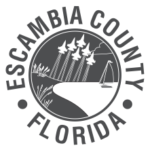Perdido Key is home to more than white sand beaches and stunning views of the Gulf of Mexico. In addition to nesting sea turtles, a variety of shorebirds, Perdido Key is the only home of the Perdido Key Beach Mouse. They may be tiny, but their impact on the Key is big.
Watch this short video by Into Nature Films to learn more about this “Little Beach Mouse from the South.”
The Plan
In order to protect this mouse and other endangered wildlife found on the key, Escambia County developed the Perdido Key Habitat Conservation Plan (HCP). The HCP helps balance the need for habitat conservation with human activities and development. It outlines conservation measures to prevent impacts to listed species, specifically beach mice, sea turtles and shorebirds. The HCP also protects the very features that make Perdido Key a vacation destination: the white sand beaches and small-town atmosphere.
With limits on how and when development may occur and established conservation measures, the HCP balances the needs of the environment with those of the economy. Any parcel that contains federally designated beach mouse habitat must obtain an Authorization of Coverage from the County, also known as a “Beach Mouse permit,” before development or land disturbance can occur.
For more information about the “Beach Mouse permit” visit our permitting page.
Questions about wildlife-friendly lighting? Visit our Barrier Island Lighting Page for more information.
Permitting Availability
“Take” is defined as the loss of designated critical habitat, measured in acres. Per the HCP, take allotments occur on a 5-year cycle and are determined by zoning category. Once the allotted take for each category is expended, no additional permits may be issued until the following permit cycle.
Current Cycle: 2020-2025
| Zoning Category | Take Remaining (ac) |
| R-1 PK (LDR) | 0.0 |
| R-2 PK (MDR) | 0.0 |
| R-3 PK (HDR) | 1.03 |
| PR-PK | 6.92 |
| C-1 PK | .799 |
| CC-PK | .235 |
For inquiries on take availability or specific parcels, contact our office.
